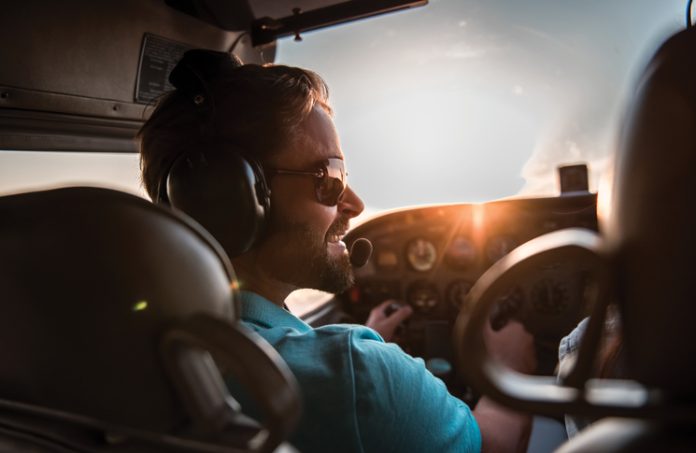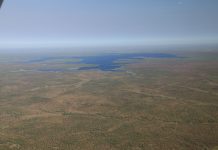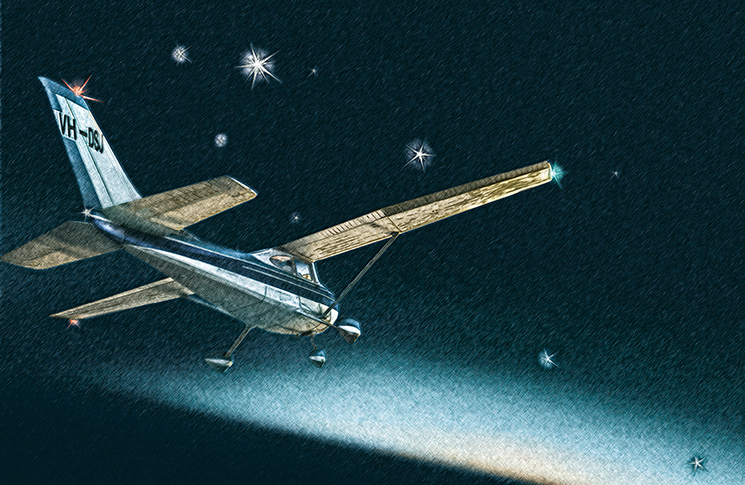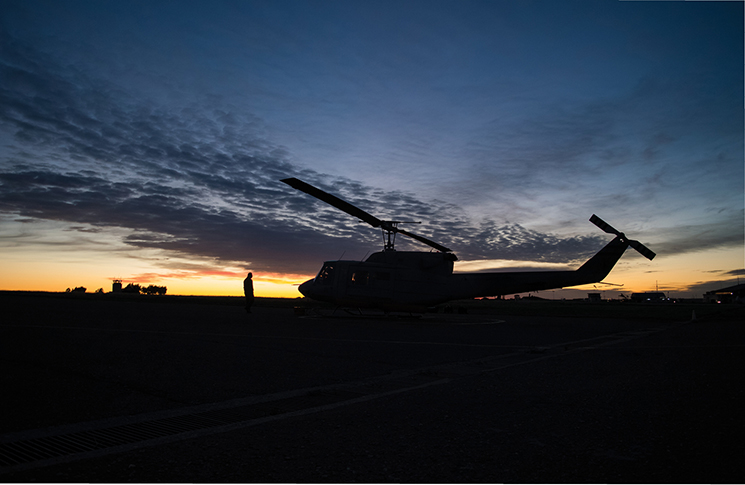Bill and Ted are building hours towards their commercial licences. Both have a valid PPL and Ted has recently obtained his night VFR rating. Ted also has a PIFR and is qualified for RNAV/GNSS approaches.
They have hired a 4-seat piston-engine unpressurised aeroplane which they plan to fly from Warnervale ALA (YWVA) NSW to Canberra (YSCB) for fuel and then to Cooma (YCOM). Weather for all airports is forecast CAVOK for their intended times of use.
Ted is planning to be the PIC for the flight to Canberra and Bill will then become the planned PIC for the flight to Cooma.
1. Prior to departure, Bill and Ted both check they have the required personal documents. Bill is concerned Ted does not have a printed copy of his medical certificate and flight crew licence. Can Ted be nominated as PIC without hard copies of these documents?
- Ted is not required to carry his medical certificate and flight crew licence in either hard copy or electronic format if he has current photographic ID in the form of a current driver licence or passport
- no, printed hard copies are required as backup in the event of failure of the electronic device
- the carriage of document requirements is satisfied if an electronic copy of the documents is carried on the flight
- a VFR flight conducted by day does not require carriage of medical certificates and licences
2. Bill has a basic Class 2 medical certificate. To fly the aircraft under CASR Part 91 rules, what restrictions apply to the flight?
- limited to 6 passengers and single-engine turbine or piston-engine aircraft
- limited to 5 passengers, piston engines and 3,500 kg MTOW aircraft
- limited to 5 passengers, day VFR and piston engines
- 5,700 kg MTOW aircraft, day VFR and piston engines
3. Pre-flight, the weather forecast for YSCB for the planned time of arrival is CAVOK. What does this mean about cloud?
- no cloud below 5,000 feet AMSL and no cumulonimbus or towering cumulus
- no cloud below 5,000 feet AGL
- no cloud below 5,000 feet AGL or below the highest 25 nm MSA
- no cloud below 5,000 feet AGL or below the highest 25 nm MSA and no cumulonimbus or towering cumulus
4. With reference to the AIP Book dated 24 March 2022, where are the technical contents of section GEN 3.5 now located?
- Airservices website
- CASR Part 91 Manual of Standards
- Bureau of Meteorology website
- CASA website
5. YSCB has a TAF3 service. If thunderstorms were forecast to start and finish during the first 3 hours of the TAF3 validity, an alternate or carriage of holding fuel must be planned when the ETA at the planned destination is within:
- 30 minutes before the commencement of the forecast weather conditions
- 30 minutes before the forecast weather conditions if it is INTER
- 60 minutes before the forecast weather conditions if it is TEMPO
- only when the ETA falls within the forecast commencement and end of the relevant weather conditions
6. Bill and Ted have now planned to stop at Bankstown (YSBK), a Class D aerodrome enroute, due to smoke from a bushfire reducing visibility on the planned track. Approaching YSBK, the weather has deteriorated and visibility is now below VMC requirements. Consideration is given to returning Warnervale, but it is determined the weather at Bankstown is suitable for special VFR operations. On first contact with ATC, a special VFR clearance is requested. What in-flight conditions must you maintain to comply with the special VFR clearance?
- clear of cloud and flight visibility of 800 m by day or night
- 300 feet from cloud and flight visibility of 2,000 m
- clear of cloud and flight visibility of 1,600 m by day
- 200 feet from cloud and flight visibility of 1,800 m
7. The maximum speed applicable to operations within a Class D aerodrome are:
- 250 knots at or below 10,000 feet above aerodrome elevation
- 210 knots at or below 3,000 feet AMSL, within 4 nm of the primary aerodrome
- 200 knots at or below 10,000 feet above aerodrome elevation
- 200 knots at or below 2,500 feet above aerodrome elevation, within 4 nm of the primary aerodrome
8. Bill and Ted are cruising at 3,500 feet AGL abeam a CTAF aerodrome. Within what distance do they need to make required broadcasts on the CTAF to avoid the risk of collision with other aircraft?
- within 5 nm and 3,000 feet AGL if they are equipped with a VHF radio they are qualified to use
- within 8 nm or less at a height that could result in conflict with aircraft at the aerodrome
- aircraft within the vicinity of a CTAF are required to monitor, but broadcasts are not mandatory if outside 5 nm
- 10 nm from the CTAF aerodrome reference point (if designated), if at a height that could result in conflict with aircraft at the aerodrome, if they are equipped with a VHF radio and qualified to use it
9. On arrival at YSCB, there have been delays due to an aircraft tyre incident leaving debris on the runway. ATC advises that a delay is required and the larger aircraft will be sequenced first. Upon receiving this instruction, Bill and Ted calculate they have 55 minutes fuel remaining, which is not enough to proceed to a suitable alternate with the required reserves. The first action Bill and Ted are required to undertake is:
- request from ATC the duration of any likely delay in landing
- declare minimum fuel if likely landing fuel is below 45 minutes final reserve
- advise ATC the aircraft is committed to land at YSCB
- declare minimum fuel in order to receive priority handling ahead of the larger aircraft if delays mean the aircraft may land with less than 30 minutes final reserve
10. During the pre-flight cockpit set-up, no AWIS or accurate QNH is available from the aerodrome. Forecast area QNH is all that is available. Area QNH will be representative to within how many hPa of any actual QNH of any location within the defined area?
- +/- 3 hPa
- no specified range
- +/- 5 hPa
- The area QNH is updated when the variation reaches +/- 3 hPa
Answers:
- (c) CASR 91.100
- (c) https://www.casa.gov.au/licences-and-certificates/aviation-medicals-and-certificates/classes-medical-certificate#BasicClass2medicalcertificate
- (d) http://www.bom.gov.au/aviation/data/education/metar-speci.pdf YSCB elevation is 1,886 feet and the highest MSA is 7,500. Therefore, for Canberra, the cloud would be forecast clear up to 7,500.
- (c) http://www.bom.gov.au/aviation/knowledge-centre/
- (d) No buffer periods apply during the first 3 hours of a TAF3. Part 91 MOS 8.02 (2)(a) and 8.04 (2).
- (c) CASR Part 91 Manual of Standards, Division 2.1 Definition of special VFR, Section 2.01 Special VFR. 800 m in option (a) applies to rotorcraft, not aeroplanes.
- (d) Part 91 MOS, 4.02, Table 4.02 (1) – Airspeed Limits. Option (a) is incorrect as it refers to 250 below 10,000 feet above aerodrome elevation; however, 250 below 10,000 is AMSL regardless of aerodrome elevation. Regulations all now refer to Above aerodrome elevation.
- (d) CASR 91.360 defines 10 nm as being ‘within the vicinity’. Part 91 MOS 21.04 (1)(a) specifies the PIC must make broadcasts when in the vicinity in accordance with Table 21.04 (1).
- (a) Part 91 MOS 19.06 (2). 45 and 30 minutes for FFR are also applicable in answering. 30 minutes final reserve is required for this day VFR flight, making option (b) incorrect. Part 91.06, see note 2, denotes a PIC should not expect any form of priority handling due to a minimum fuel declaration.
- (c) http://www.bom.gov.au/aviation/data/education/area-qnh.pdf






What is SMS pro? INTELEX on steroids